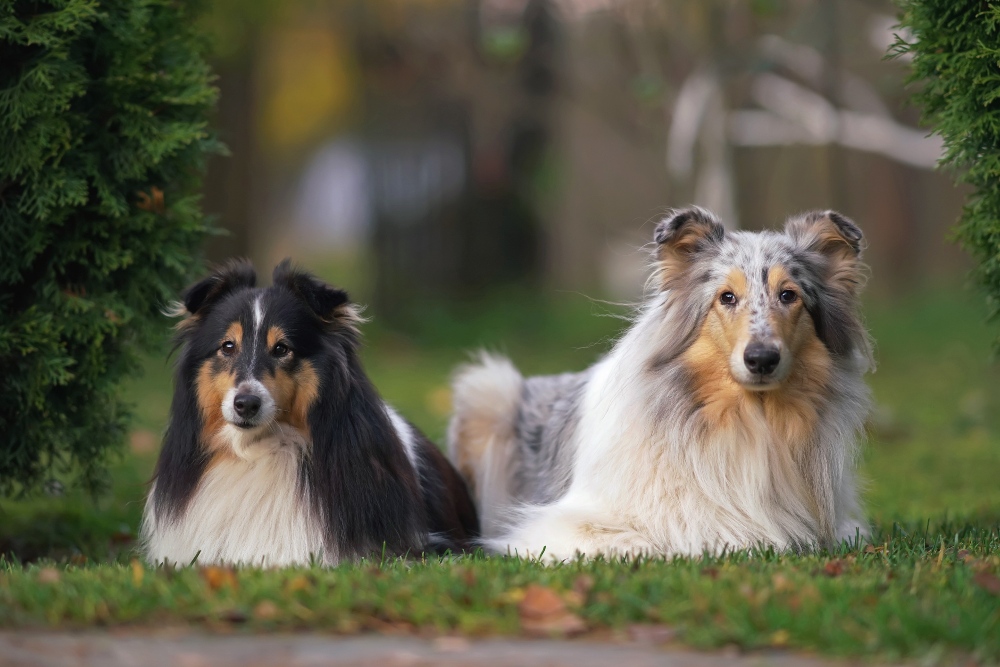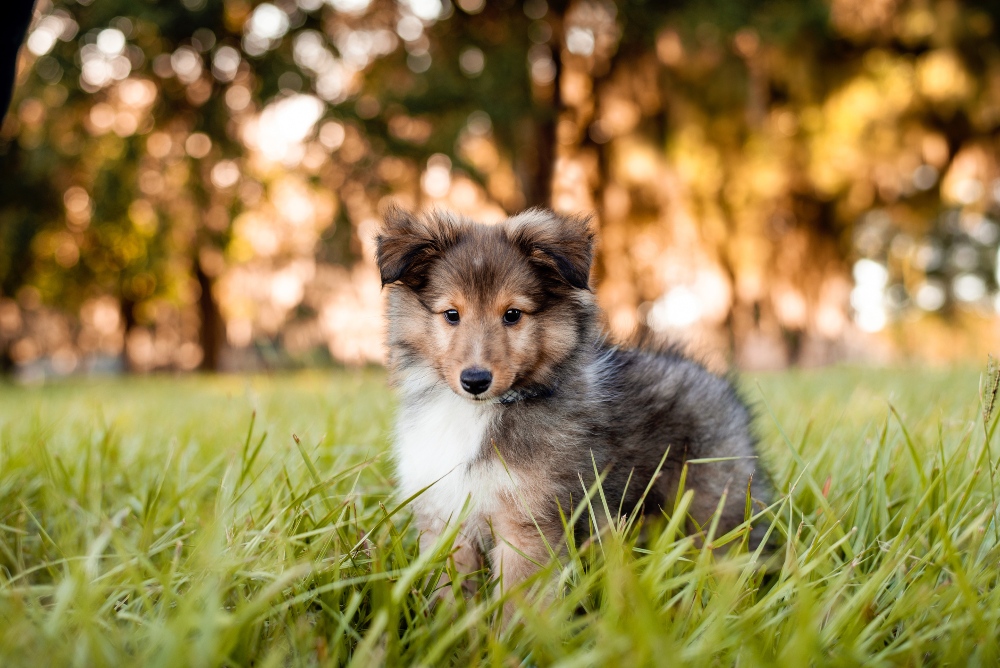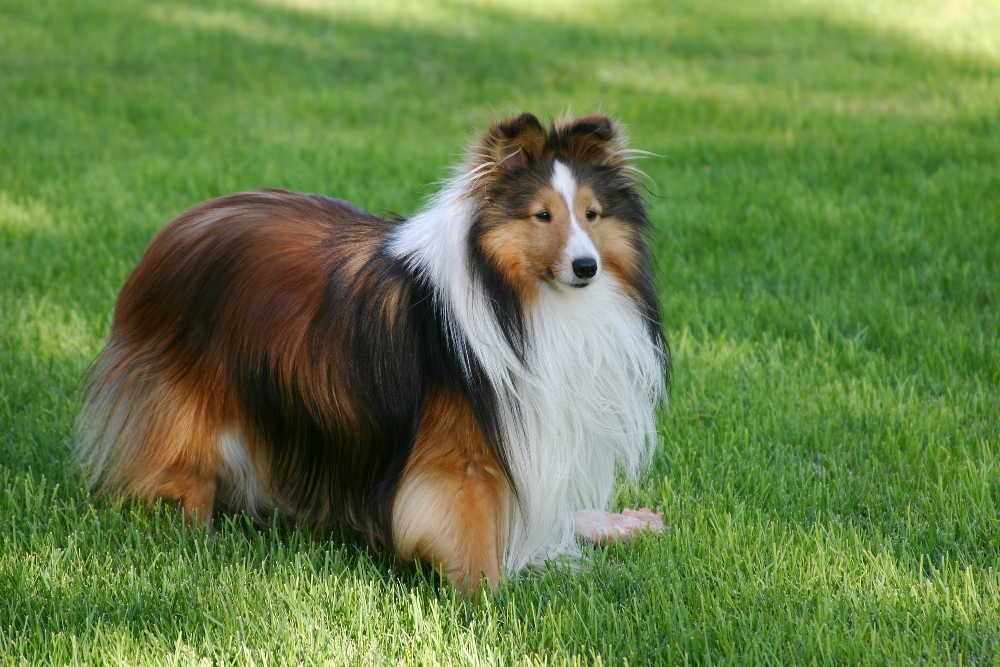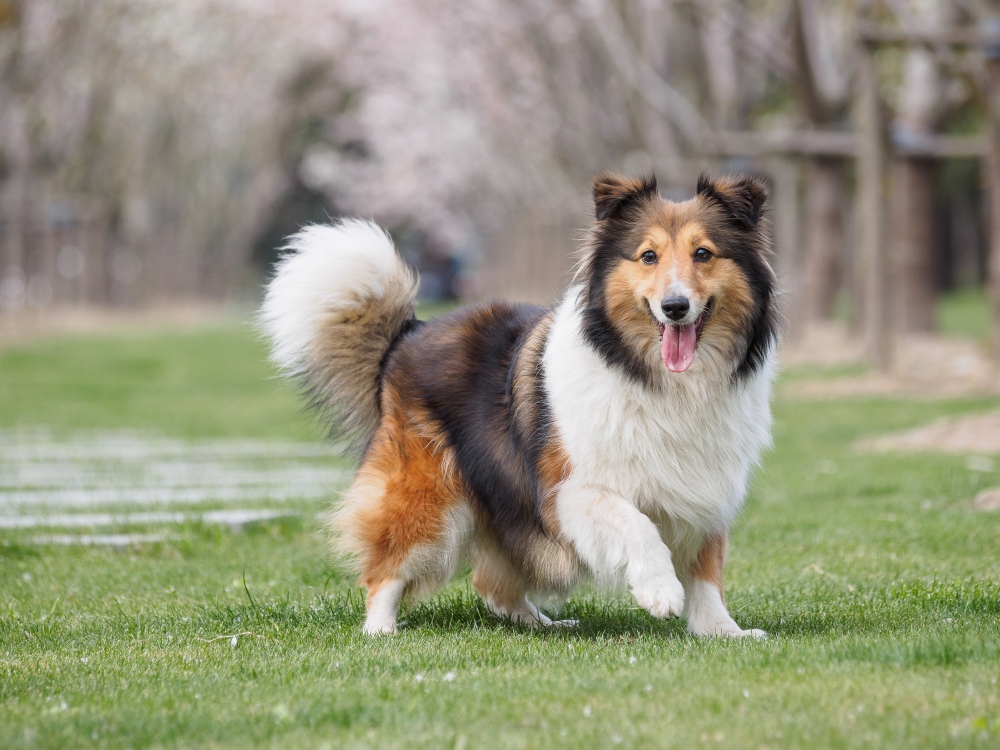Table of Contents
Introduction to Shetland Sheepdogs
With an energetic and playful temperament, Shetland sheepdogs are commonly known as Shelties. This breed of dog is eager to please human companions, while also being attentive and affectionate. They work well with many different types of pet parents and in various environments. Yet as a herding-type dog (‘herding’ means circling and gathering sheep), they also make excellent hiking companions and thrive on exercise and regular activity. Fans of this breed love the Sheltie’s beautiful coat, which is actually quite hardy and can help a dog withstand cool and wet weather.
Read on to learn more about the Shetland sheepdog breed and how to take the best care of these amazing dogs.
Size of Shetland Sheepdogs
Both male and female Shetland sheepdogs weigh in the range of 15 to 25 pounds when they reach their final adult weight. The dogs stand at about 13 to 16 inches tall when fully grown. There are only slight differences in size between these male and female dogs. Shelties do most of their growing during the first 10 months of life, but they may gain a little bit more weight up until the age of one.
Here’s how big you can expect your Shetland sheepdog to get when fully grown.
| Weight Chart | 3 months | 6 months | 9 months | 12 months |
| Male and Female Shetland Sheepdogs | 6-11 lbs. | 11-20 lbs. | 13-23.5 lbs. | 14-25 lbs. |

Characteristics of Shetland Sheepdogs
Shetland sheepdogs stand out as a breed that is small, active, loving, and intelligent. These are great family dogs that do well around kids, but they can be shy around people they don’t know and tend to bark when something catches them off-guard. They make great watchdogs but need to be trained from an early age to control excessive barking tendencies.
Many people who have Shelties as pets say that these dogs are a little too smart for their own good because they can become easily bored without mental stimulation. Unlike many other breed of dogs though, Shelties can stand to be alone for a little while during the day as long as you give them plenty of attention when you get back home.
As you get to know a Shetland sheepdog’s personality, here’s what you can expect based on his or her breed characteristics:
| Breed Characteristic | Level (High, Medium, Low) |
| Affectionate with People | High |
| Good with Kids | High |
| Good with Pets | High |
| Need for Exercise | Medium |
| Energy Level | Medium |
| Intelligence Level | High |
| Able to Be Trained | High |
| Amount of Barking | High |
| Amount of Shedding | High |
History of Shetland Sheepdogs
Shetland sheepdogs originated from Scotland and are named after the Shetland Islands located just off of the Scottish coast and at the northernmost point of the United Kingdom. They were originally bred to be herding dogs to guide sheep, horses, and chickens. These dogs were bred to be smaller than the collie dog so that they would eat less in a place where food was scarce at the time. Other animals, such as ponies and sheep, were bred to be small in the islands here too. There are few written records left behind to provide details about how the breed evolved, and the dogs lived in isolation from other breeds for a long time due to the remote location of the Shetland Islands.
Shelties became known elsewhere in the United Kingdom in the early 1900s, and the kennel club in England recognized the breed as a Shetland collie in 1909. The dog’s name was soon changed to the Shetland sheepdog, and the American Kennel Club registered the first dog of the breed in 1911. Shelties became very popular in the U.S. in the 1970s through the 1990s. Today, these dogs are commonly trained to do therapy work, herding, agility and obedience training, and compete in dog shows.

Shetland Sheepdog Standard Information
Shelties are defined as small and intelligent dogs with long hair and an agile nature. There are distinct masculine and feminine characteristics of Shelties, and there are certain physical characteristics by which they are judged at dog shows and that are officially accepted by national and international organizations.
Here is an overview of the breed standard information for Shetland sheepdogs:
Head:
- Long, blunt wedge tapering from ears to nose
- Alert, intelligent, gentle, and questioning expression
- Medium, dark, almond-shaped eyes
- Small, flexible ears placed high on head
- Top of skull flat with no prominence at nuchal crest (horizontal crest across the back of the skull)
- Scissors bite
- Clean and powerful jaws
Neck, Topline, Body:
- Muscular and arched neck that is neither too short nor thick
- Deep chest with brisket reaching to point of elbow
- Ribs well sprung but flattened at lower half
- Long tail that is not curved at end
Forequarters:
- Shoulder blades slope at a 45-degree angle
- Pasterns strong, flexible, and sinewy
- Dewclaws may be removed
Hindquarters:
- Broad and muscular thighs
- Short and straight hocks
- Dewclaws should be removed
Coat:
- Double coat with long, straight, and harsh outer coat and short and furry under coat
- Abundant mane and frill
- Feathered forelegs
- Smooth hair on face, feet, and tips of ears
Color:
- Black, blue merle, and sable
- Markings of white or tan
- No more than 50 percent white color
Gait:
- Effortless, smooth gait with no jerkiness or stiffness
- Drive from the rear
- No crossing of feet or throwing weight from side to side
Caring for Shetland Sheepdogs
One of the biggest considerations when caring for a Shetland sheepdog is grooming because these dogs have a double coat that needs to be brushed regularly to prevent matting. They need a moderate amount of exercise, which can involve low-key outings to parks and other people’s homes for socialization. Shelties are very intelligent dogs that need mental enrichment to deter them from destructive behavior. They also need training to overcome strong herding instincts if they live with other pets or children.
Here are some general tips for taking the best care of a Shetland sheepdog:
Best Living Environments:
- Not the best breed for apartment living
- Homes with a yard work well for Shelties
- Ensure yard is securely fenced due to herding instincts
- Can be left alone for some time during the day while families are at work or school
- Should live indoors with people, even though they can withstand harsh weather
Type of Exercise:
- Playing fetch with a ball
- Daily walks in the neighborhood on a leash
- Hiking trails with family members
Mental Enrichment:
- Competitive obedience exercises
- Give a Sheltie a job to do
- Provide puzzles and interactive toys while you are away from home
Training Strategies:
- Train Shelties to stop barking on command
- Keep training sessions fun and low-pressure
- Fairly easy to train because Shelties are eager to please
Grooming Tips:
- Shelties shed a lot, so invest in a good vacuum cleaner
- Shedding is most common in the spring season
- Brush weekly with a pin brush
- Spray coat with water before brushing
- Trim nails once or twice per month

Common Health Problems of Shetland Sheepdogs
Fortunately, Shelties are typically healthy dogs that have an average life expectancy of 12 to 14 years. The national breed club for this type of dog, the American Shetland Sheepdog Association, recommends that Shelties have a hip evaluation and ophthalmologic (eye) evaluation to ensure their good health. This helps prospective pet parents know what to expect in the future because many genetic and breed-specific conditions do not appear until a dog reaches full maturity.
These are some of the most common health issues that arise with Shetland sheepdogs:
- Hypothyroidism
- Collie eye anomaly (can lead to blindness)
- von Willebrand’s disease (blood clotting disorder)
- Hip dysplasia
- Dermatomyositis (skin lesions)
Diet and Nutrition for Shetland Sheepdogs
The average Shetland sheepdog needs about ¾ cup to two cups of dry dog food total per day, divided into two meals for the morning and evening. Shelties respond well to food rewards during training, in addition to other positive reinforcement techniques like extra playtime, verbal praise, and petting.
Where to Adopt or Purchase Shetland Sheepdogs
The American Shetland Sheepdog Association is the AKC parent club for this breed and has over 66 member breed clubs located throughout the U.S. This organization provides resources for both responsible breeding and adopting a Sheltie from a rescue group. Sheltie Nation, Sheltie Planet, and Charity Paws are a few examples of organizations that have websites to connect you to a Shetland sheepdog in need of a loving home. Meanwhile, you can find and purchase purebred Sheltie puppies through the American Kennel Club Marketplace.
Related Breeds
Have you fallen in love with Sheltie dogs? Then you might also want to learn more about these similar breeds as well:
- Border collie
- Scotch collie
- Belgian sheepdog
- Belgian tervuren
- Belgian sheepdog
- Keeshond
Pet Insurance for Shetland Sheepdogs
To give you peace of mind that your Sheltie will always receive the medical care he or she needs, Healthy Paws offers Shetland sheepdog pet insurance with no costly add-ons. You can take your Sheltie to any licensed vet you trust when an accident or illness happens and then experience a speedy claims process to take the stress out of getting your pup feeling well again.
Request an instant Shetland sheepdog pet insurance quote today!









